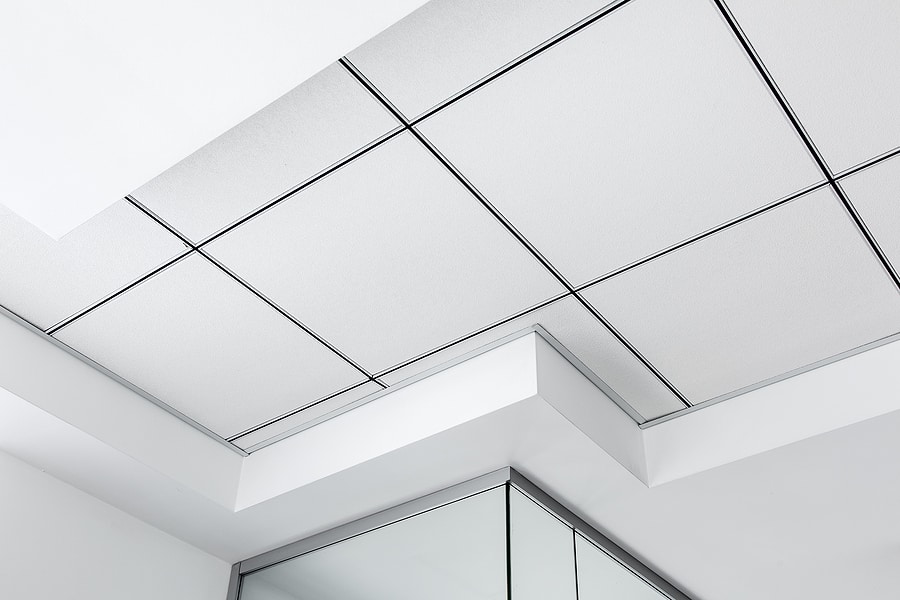Do you want to know how to get the best sound quality in your space, whether a busy office or an intimate home theater? Acoustical ceilings are the answer. Installing Acoustical Ceilings can reduce reverberation and background noise from outside sources, creating a pleasant acoustic environment while ensuring minimal disturbances for workers, customers, or guests.
In this blog post, we’ll discuss everything you need to know about building better acoustics with an acoustic ceiling–from installation tips and warning signs of bad-quality materials to choosing between different types of acoustical ceilings. Keep reading if you want to discover just how much good acoustics can do for your space.
What is an Acoustical Ceiling, and Why Should You Use One in Your Home or Office Space
An acoustical ceiling, or a drop ceiling, is a must-have in any home or office space. It is a type of suspended ceiling that not only improves the aesthetics of a room but can also serve as a sound-absorbing and energy-efficient solution. It comprises individual tiles that can be easily replaced and customized, making it a cost-effective option.
Additionally, the tiles can help control a room’s temperature, especially during hot summer and cold winter days, ultimately lowering your energy bills. Overall, an acoustical ceiling is a smart investment that provides practical and decorative benefits, making any space feel more comfortable and professional.
Different Types of Acoustical Ceilings and Their Benefits
a. Fiberglass Ceiling Tiles: Fiberglass ceiling tiles are an excellent option for acoustic ceilings. Not only do they provide a clean, polished look to any space, but they also have the added benefit of absorbing sound. This feature makes them ideal for loud environments, such as classrooms or offices with open floor plans.
Fiberglass ceiling tiles can also contribute to better indoor air quality as they are made from recycled materials and do not contain harmful substances. The durability of fiberglass ceiling tiles means they can withstand high levels of moisture and humidity, making them suitable for installation in kitchens, bathrooms, and other high-moisture environments. The benefits of fiberglass ceiling tiles make them an excellent investment for any commercial or residential space.
b. Mineral Fibre Ceiling Tiles: Mineral Fiber Ceiling Tiles have been a popular solution for acoustical ceilings for decades. These tiles are composed of mineral fibers, which provide excellent sound absorption properties. This characteristic makes it ideal for various applications, such as offices, classrooms, hospitals, and public facilities. Not only do they enrich the aesthetics of the space, but they also have an array of benefits, including energy savings, fire resistance, and mold resistance.
With an ever-growing focus on environmental sustainability and energy efficiency, it’s worth noting that mineral fiber ceiling tiles are made with a significant portion of recycled content, making them a responsible choice. These tiles not only improve room acoustics and energy efficiency but also the safety of the occupants.
c. Wood Panels & Timbers: Wood panels and timbers are an excellent choice for adding character and warmth to any space. Not only do they provide a natural aesthetic, but they also offer several benefits for your home or office. One of the most notable benefits is their acoustical capabilities.
Wood panels and timbers can absorb and deflect sound, making them ideal for creating quieter spaces. Additionally, they are durable and long-lasting, requiring minimal maintenance over time. Whether you’re looking to add a rustic touch or want to improve the functionality of a room, wood panels, and timbers are an excellent choice.
How to Choose the Right Kind of Acoustical Ceiling for Your Need
The first step in deciding is determining the room’s purpose. A sound-absorbing ceiling will be ideal if it’s a workspace with a lot of ambient noise, such as a call center or classroom. However, if the space is intended for music production or recording, a more reflective ceiling would be necessary to prevent sound from being absorbed too much. Another important factor to consider is the design aesthetic of the space.
Various textures, colors, and patterns are available to match the overall look and feel of the room. Ultimately, it’s important to consult with professional Rhode Island Contractors who can help determine the best type of acoustic ceiling for your specific needs.
Lucas Noah, armed with a Bachelor’s degree in Information & Technology, stands as a prominent figure in the realm of tech journalism. Currently holding the position of Senior Admin, Lucas contributes his expertise to two esteemed companies: OceanaExpress LLC and CreativeOutrank LLC. His... Read more
